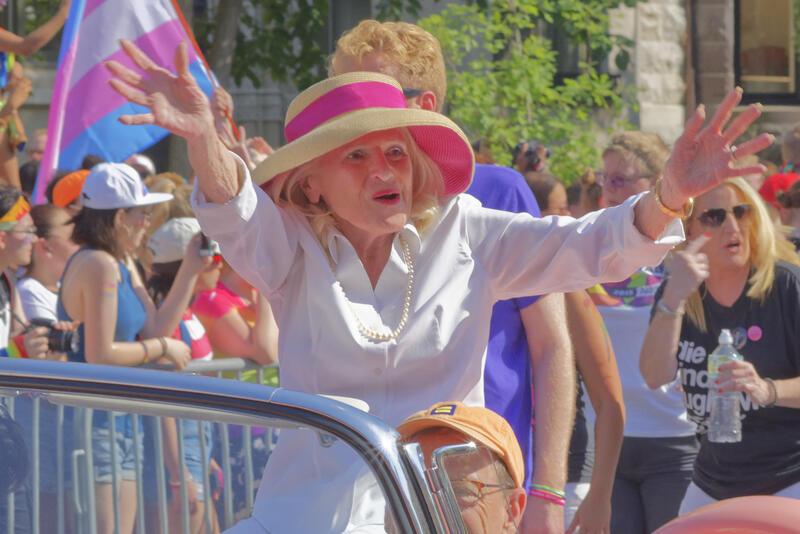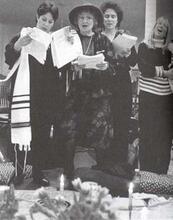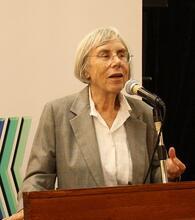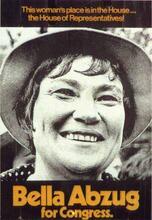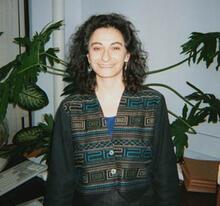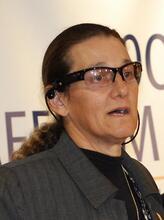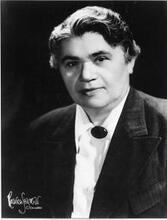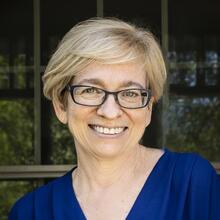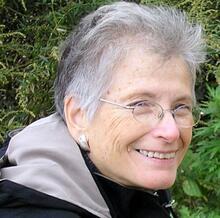Edie Windsor
When Edie Windsor’s wife died after 44 years together, Edie was required to pay taxes that a straight widow would not have to pay. Her lawsuit against the federal government went all the way to the Supreme Court. The case that bears her name overturned the federal government’s ban on recognizing same-sex marriages. Edie Windsor and her wife Thea Spyer were a Jewish lesbian couple whose life in late-twentieth-century New York reflected the increasing visibility of LGBT people in the decades after the Stonewall uprising. Before Edie became a full-time activist, she was a computer programmer at IBM in the early days of a male-dominated field.
Early Life
When Edith “Edie” Schlain was born in Philadelphia on June 20, 1929, homosexuality was illegal. All 50 states had laws against sodomy, which usually meant any form of “non-procreative” sex but which were enforced almost exclusively against lesbian, gay, bisexual, and transgender people. Edie was the youngest of three children born to James and Celia Schlain. When she was a little girl they owned a candy store and lived above it; the store was quarantined and then sold when Edie and her brother got polio. The family recovered, and eventually moved to a middle-class neighborhood in Philadelphia.
When Edie graduated from Temple University in 1950 with a degree in psychology, the sodomy laws functioned to deny LGBT people employment and housing by classifying them as criminals. Very, very few people were “out of the closet” at that time; certainly not Edie. She knew she was a lesbian, but couldn’t imagine how “a queer” could have a happy life, so she married her brother’s friend Saul Windsor. “Anytime I would see two women walking on the street on a Saturday night, I would be so jealous,” she said. Edie and Saul divorced in 1952, less than a year after their marriage.
Computer Scientist
At 23, Edie moved to New York City. She realized that if she didn’t have a husband to support her she would need a profession, so she enrolled in a master’s program in mathematics at New York University. She graduated in 1957 and went to work for IBM, where she designed systems architecture and language processors. Needless to say, there were very few women in her group. Edie loved her work and eventually rose to the title of Senior Systems programmer, the highest technical title at the company.
In the early years Edie was terrified of being found out. While at NYU, she worked on a computing project for the Atomic Energy Commission and was interviewed by the FBI for a security clearance. Being gay then meant being barred from working for the federal government, but it turned out the FBI was more interested in Edie’s sister’s union activities. Still, Edie later recalled, “I found out that impersonating a man was illegal, so I wore crinolines and a marvelous dress to meet the FBI” (NYU Alumni Magazine).
Meeting Thea
Edie met Thea Spyer, a psychologist, in 1963 at a Greenwich Village restaurant called Portofino, known underground as “where the lesbians go.” They danced all night, though they didn’t become a serious couple until two years later.
On Memorial Day weekend 1967, Thea proposed. Knowing that a diamond engagement ring would draw too many questions at work, she gave Edie a diamond brooch to symbolize their commitment. It was two years before the Stonewall Uprising, and 36 years before Massachusetts became the first U.S. state to allow same-sex couples to marry. A documentary film about their life together is called “Edie & Thea: A Very Long Engagement.”
Edie and Thea were both Jewish, though neither was traditionally observant. Edie’s parents arrived in America before she was born; Edie kept the nineteen-volume dictionary her father used to learn English. She remembered her mother telling her that if a boy called her “a dirty Jew,” she should pull his hair and run home. Thea was born in Amsterdam in 1931 to a wealthy Jewish family that managed to escape the Holocaust, fleeing first to England and then to the U.S.
By 1967, Edie and Thea had moved in together in Greenwich Village and bought a beach house in Southampton, where they spent the next 40 summers. They loved to dance and entertain; Thea was a good cook, and they hosted elaborate parties for friends, including annually on Memorial Day to celebrate their anniversary. Although Edie was never out at work, in the years after Stonewall Edie and Thea marched in the Village with the Gay Liberation Front. When IBM moved Edie’s group out of the city in 1975, she took a buyout. She created a computer consulting company and devoted herself to local gay and lesbian activism, and to Thea.
In 1977, Thea was diagnosed with Multiple Sclerosis. Though her mobility decreased over the decades, she continued her career as a clinical psychologist, seeing patients until the very last day of her life. The couple continued to dance, swim, and entertain; eventually their dancing style adapted to Edie sitting on Thea’s lap in her wheelchair. In the last years of Thea’s life, Edie became her full-time caregiver.
A Very Long Engagement
Prohibited from marrying, Edie and Thea had no rights as a couple under the law; when Edie sought to name Thea as the beneficiary of her IBM pension, she was rebuffed. But by the early 1990s, decades of LGBT activism were beginning to bear fruit, with state and local non-discrimination ordinances and domestic partnership registries offering some legal recognition to couples. When New York City created a registry in 1993, Edie wanted them to be among the first. Thea demurred, saying she had patients scheduled all day, to which Edie replied: “I have waited more than 28 years for this day, and I am not waiting a single day more!” Thea cleared her calendar, bought flowers, and they went down to the Municipal Building (District Court Complaint, p. 9).
In 2003, Massachusetts’ highest court held that the state had “no constitutionally adequate reason” to deny civil marriage to same-sex couples. Edie and Thea hoped they would eventually be able to marry in New York, but as Thea’s health deteriorated, they could not wait any longer. In 2007 they traveled to Toronto, Canada, where marriage had been open to same-sex couples for four years, and married with a few friends in attendance. Thea died two years later, in February 2009.
Thea’s death left Edie with a $363,053 federal tax bill. A straight widow with the same estate would have owed nothing, but the “Defense of Marriage Act” passed by Congress in 1996 barred the federal government from recognizing any marriages of same-sex couples. (At the time the law passed, there were none. Although gay couples could not marry anywhere in the world, litigation in Hawaii was on the verge of changing that. Congress, in an anti-gay panic, passed “DOMA” to preempt equal rights.)
The Lawsuit
Edie decided to sue. She first called the venerable gay rights group Lambda Legal, but they declined to take the case, feeling that a wealthy woman’s tax bill wasn’t a sympathetic vehicle for challenging DOMA. Edie next called Roberta “Robbie” Kaplan, a lesbian partner at Paul Weiss Rifkind Wharton and Garrison, an elite law firm that had done gay rights cases pro bono. Kaplan took the case, eventually in collaboration with the ACLU.
Edie won at the district court, the circuit court, and then the Supreme Court by a vote of 5-4 in 2013. As a result of the Supreme Court’s decision in Windsor v. U.S., all married couples are now fully recognized by the federal government: for taxes, Social Security benefits, immigration, and much more. Just two years later the court ruled that no state could exclude same-sex couples from the right to marry; marriage equality became the law of the land.
Edie burnished the legacy of her 44 years with Thea Spyer through joyful post-Supreme Court appearances around the country and around the world. President Obama thanked her for her service to the nation; gay people cried and hugged her on sight. She loved all of it, including telling the story of the great love she and Thea had shared. She remained active in LGBT community politics; a host of LGBT programs and places bear her name and Thea’s. She belonged to Congregation Beth Simchat Torah in New York City. She remarried at the end of her life, to a much younger woman named Judith Kasen. Edie Windsor died on September 12, 2017, at the age of 88.
Bernstein, Jacob. “The Remarriage of Edie Windsor, a Gay Marriage Pioneer.,” New York Times, September 30, 2016. https://nyti.ms/2drkznX
Brief of respondent Edith Schlain Windsor, in Her Capacity as Executor of the Estate of Thea Clara Spyer (Merits) filed. Accessed July 2020 at: https://www.nyclu.org/sites/default/files/Windsor%20Supreme%20Court%20brief%20on%20merits.pdf
Coplan, Jill Hamburg. “When a Woman Loves a Woman,”NYU Alumni Magazine. Issue 17, Fall 2011. https://www.nyu.edu/alumni.magazine/issue17/pdf/NYU17_FEA_DOMA.pdf
District Court complaint, Edith Schlain Windsor v. United States of America https://www.nyclu.org/sites/default/files/releases/WindsorComplaint---FINAL.pdf
Edie Windsor website. https://EdieWindsor.com.
Goodridge v. Dept. of Public Health, 798 N.E.2d 941 (Mass. 2003).
Gray, Eliza. "Edith Windsor, The Unlikely Activist." Time Magazine, December 11, 2013. https://poy.time.com/2013/12/11/runner-up-edith-windsor-the-unlikely-activist/print/
Levy, Ariel. “The Perfect Wife.,” New Yorker, September 23, 2013. https://www.newyorker.com/magazine/2013/09/30/the-perfect-wife
Muska, Suan, and Gréta Ólafsdóttir, directors. “Edie & Thea: A Very Long Engagement,” 2009. https://www.imdb.com/title/tt1512779/
“Remembering Edie Windsor: Tech Pioneer, Equality Advocate” https://anitab.org/profiles/remembering-edie-windsor-tech-pioneer-equality-advocate/

